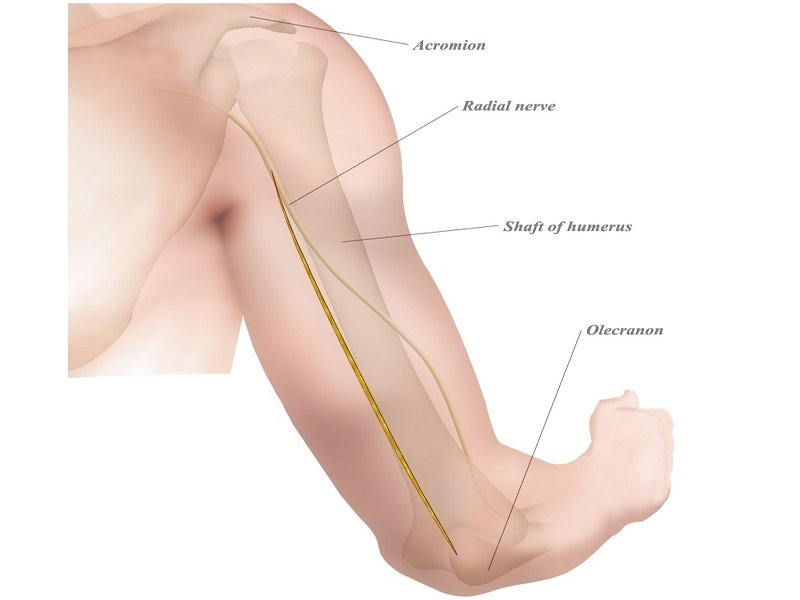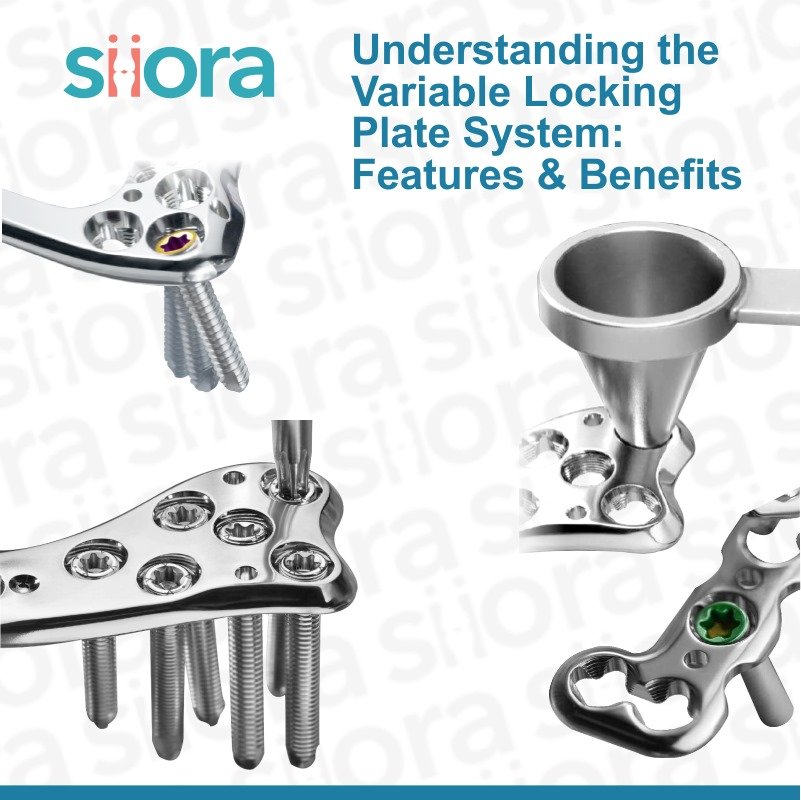The humerus bone connects the shoulder to the elbow. The upper extremity includes this segment of the body together with the hand and the forearm. The humerus is a strong bone that has the ball of the ball-and-socket shoulder joint on the top and a hinge of the elbow joint on the bottom. There are three types of humerus fractures: proximal humerus fractures of the shoulder, mid-shaft humerus fractures, and distal humerus fractures of the elbow.
Mid-Shaft Humerus Fractures
A mid-shaft humerus fracture does not involve the shoulder or elbow joints. Statistically, about 3% of all broken bones constitute this type of fracture. The most common reason for a humeral shaft fracture is a fall or high-energy injuries (motor vehicle collisions, sports injuries). Penetrating trauma (gunshot wounds) can also cause this injury. Osteoporosis is the cause of many humeral shaft fractures.
The X-rays often frighten the patients, because there is only one bone connecting the shoulder to the elbow, and patients fear as though their arm is not attached. However, reassurance should be there, that there is much more than bone that holds the arm and that the vast majority of mid-shaft humerus fractures heal without surgery.
Treatment
Non-surgical treatments are the most common treatment options. Thanks to gravity, which works to align the humerus, and often the best treatment for a humerus fracture is simply allowing the arm to hang by the side. Furthermore, minimizing the chance of the complication is one reason to consider non-surgical treatment.
Multiple fractures, open fractures, injuries to blood vessels or nerves, and failure of healing with nonsurgical treatment (nonunion) lead to surgical treatment, which includes.
- Fracture Bracing: A fracture brace, often referred to as a Sarmiento brace, named after the physician who popularized this treatment is the most common treatment for a humeral shaft fracture. Usually, the treatment of a fracture is with a splint or sling allowing swelling to subside, and then the surgeon will fit a fracture brace to the patient. The brace holds the humerus in alignment and looks like a clamshell. As healing progresses, patients can begin to use their shoulder and elbow.
- Metal Plates: The most common surgical treatment of a humerus fracture is to place a large metal locking plate along the humerus and secure it with screws. In comparison to non-surgical treatments, surgical treatments have higher associated risks of nerve injury and nonunion.
- Rods: An intramedullary metallic rod is placed in the hollow center of the bone. The advantage of this option is that the surgery is less invasive, and the surgeon is working far from the important nerves that travel down the arm. The concern with a rod is that healing rates are not high, and nonunion is a common problem.
Healing Time and Complications
Though complete healing of a mid-shaft humerus fracture takes several months, one may initiate exercises to improve the mobility of the shoulder and elbow joints much sooner. The two complications usually encountered are injuries to the radial nerve and nonunion of the fracture.
The radial nerve tightly wraps around the middle of the humerus and injuries to it may occur. It may injure at the time of the fracture or during treatment. Radial nerve injuries cause numbness on the back of the hand, and difficulty straightening (extending) the wrist and fingers. Most radial nerve injuries improve with time, but the doctor needs to follow this carefully to decide on any further treatment.
Nonunion is when the fracture does not heal. Several reasons could result in a nonunion. One of the most common reasons for nonunion is surgery. The soft tissues surrounding the fracture are further disrupted by surgery and this can compromise blood flow to the site of the fracture. While, it would be advisable to avoid surgery to prevent the risk of nonunion. But in case of a nonunion surgery, one must stimulate a healing response of the bone.








